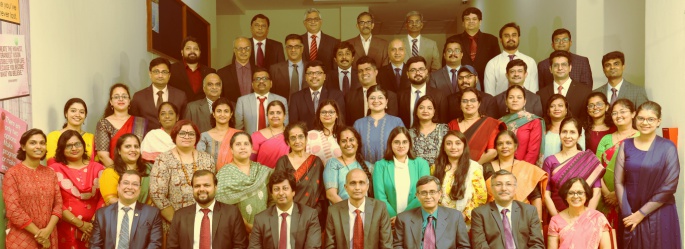“Recapping key HR trends since the inception of Covid-19”
Author: Prof. Shruthi and Lavanya Verma (Student)
As the pandemic brought about unprecedented times, there was a transformation in the journey of an employee, from their onboarding to their exit. While the virtual space replaced in-person touchpoints, they accelerated timelines and saved costs. Covid-19 became an inoculum for the long due change and proved to be an impetus to streamline human resource processes. Some areas that faced challenges are recapped in the paragraphs below.
Hiring and Onboarding
While the hiring lens looked across geographic barriers, the focus on internal hiring began to gain ground. According to Gartner‘s benchmarking data, employee engagement is 27% greater at firms with a “vibrant internal labour market,” and an employee’s desire to stay is generally 33% higher. This internal mobility carried a large cost reduction capability. One of the major factors that led to cost savings in internal hiring accounted for lower recruitment expenses. Internal recruits also had organizational expertise with them when they started their new job, resulting in better efficiency.
The absence of reading body language is the biggest challenge in virtual onboarding. A smile, a warm handshake, a pat on the back, an impromptu chat and personal vibes in the in-person space have been replaced by (emotionless) emojis. While engaging employees in this mode may be difficult, it is not impossible. A robust HR onboarding strategy can begin the process from the point the new recruit has been given the offer letter. This function is crucial as it is the first step the employee takes into the organization.
Internal Communication
In view of disruption in the work-life balance, there was a need for agility and adaptivity among the employees. To further drive employee engagement firms focused on frequent communication with the employees. Considering the situation, the pandemic laid out, companies analysed and altered their communications to reflect both the information and emotional demands of employees.
According to a Gartner study, 16% of companies are increasingly employing technology to assess their employees, including virtual clocking in and out, tracking work computer usage, and monitoring employee emails or internal communications. While some businesses tracked productivity, others tracked employee engagement and wellbeing to gain a better understanding of the employee experience. Organizations increasingly employed unconventional employee monitoring methods involving more people analytics to understand the needs of and collect employee health and safety data.
Employee Wellbeing
As the in-person interactions decreased and stress of the unknowns increased, employee well being got impacted. In addition to fulfilling the basic needs of safety and security, organizations became proactive to highlight individuals’ purpose and social cohesion to alienate feelings of loneliness. Various policies were made to provide health benefits to employees. The benefits were further extended to their families covering telehealth and mental health support initiatives.
Leadership in the New Normal
Demonstrating compassionate leadership helped in building trust. To ensure a positive work culture, a network of teams was encouraged to quickly solve problems enhancing random connections across the employee network to build effective teams. Inclusion and psychologically safe teams increased the engagement and productivity of individuals. Leveraging this time organizations that chart a route that prioritizes employee experience will have a lasting influence now and in the future.
Digitization of Processes
As industries evolved and processes became digital, organizations assessed what and how the current roles could change, role-specific training was made available through online platforms. For instance, in early 2017, just 10% of Tata Communications’ training was supplied digitally, but by March 2020, even before the pandemic, 90% of the company’s L&D programmes were delivered digitally. Many employees even preferred to conduct their training on weekends.
The usage of bit-sized learning and development training went through the ceiling as the platforms became more personalized and intelligent. Talent acquisition teams shifted their focus to segmenting internal talent through application tracking systems or candidate relationship management software. The trends in training have changed from in-person to online environments with a renewed emphasis on soft skills.
In short, the pandemic redefined the HR functions from the point of hiring and onboarding, L&D, career management, employee engagement to wellbeing. Eighteen months into the ‘new normal’ has brought into play what would have eventually become a reality. The thought process for HR managers, as they prepare their workforce to face the challenges of the future, should be along the lines of what Steve Jobs quotes: “You cannot mandate productivity; you must provide the tools to let people become their best.”




